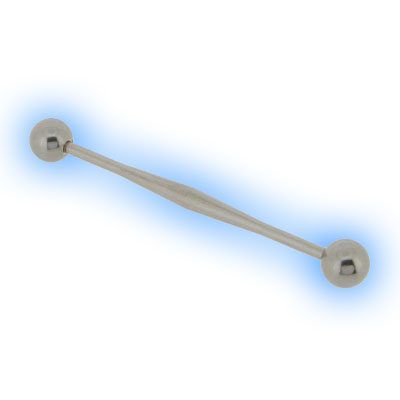

How do you take care of an industrial piercing? That's not to say you'll be oozing and sore every day for a year, but it does mean you'll have to be diligent for at least six months about cleaning your piercing and being delicate with it. Still, like many cartilage and inner-ear piercings, the industrial takes longer to heal than a classic lobe piercing: specifically, six month to a year, says Lucy. Yes, industrial piercings do heal, as long as you take proper care of it (most on that below). You can always treat your industrial as two separate piercings and use rings, circular barbells or studs to change things up.$8 at Walgreens Credit: Courtesy Image Do industrial piercings ever heal? However, piercings are all about individuality. Note that it is normal to feel some discomfort while removing your jewelry for the first time.īelow are some handy jewelry changing videos for referenceīarbells are the most common jewelry for industrial piercings. Use saline solution to clean your piercings thoroughly. Proceed to unscrew one side of the jewelry and pull the bar out.īe sure to sanitize the jewelry while it is out of your ear to keep it clean. Disposable gloves can come in handy for sanitation and extra grip. Wash your hands thoroughly before removing your jewelry. If your piercing is healed but still sensitive, you can use warm saline compresses for a few minutes before moving the jewelry around.
#Scaffold piercing how to
How to Remove Your Industrial Piercingĭo not remove your initial jewelry until the healing process is complete. Read more about piercing aftercare routine here. Carefully remove these and clean the ends while moving the jewelry as little as possible. Put some of the saline mixture onto a clean towel and hold it on your piercing to dislodge any debris that may be present. Use 1/4 teaspoon of sea salt mixed with 8 ounces of warm water for cleaning your industrial piercing twice per day. It’s recommended that you routinely clean your piercing to avoid potential issues or infections. Saline spray is a great on-the-go alternative for cleaning your piercing. This sea salt mixture is ideal for keeping your piercing clean and happy. Remember that abiding by proper aftercare guidelines will save you from multiple risks and potential infections.

Your jewelry can easily get snagged and cause damage and unnecessary pain. Be extremely careful when fixing your hair and getting dressed.Sleep on the opposite side in order to avoid irritating your new piercing.Consult your piercer before making any changes, as taking jewelry out can cause your piercing to close. Do not move, spin or change your jewelry during the initial healing phase.Always wash your hands before touching your piercing.In order to avoid piercing issues like ear bumps or infected ear cartilage, the recommended guidelines below should be followed during the healing period: See more about the exact procedure in the videos below. As a precaution, the piercing is cleaned at the entry and exit points to avoid a higher risk of infection. After the second puncture, the barbell is pulled all the way through to the outer cartilage and fastened.

The barbell is then inserted through the first hole before the second piercing. Once you’ve agreed on the placement of your industrial, your piercer will puncture the first hole with 14 gauge needle. This allows you to see the final arrangement of your new piercing and gives you a chance to change the positioning before moving forward. Each entry and exit spot is marked, as well as the connected line where the bar will be. The next step is marking your ear with a surgical pen.

This piercer should be just as thorough in explaining your aftercare routine, as following these guidelines will keep your piercing protected.īefore the actual procedure, your piercer needs to glove up and sterilize everything involved: their instruments, the piercing location and your chosen jewelry.


 0 kommentar(er)
0 kommentar(er)
